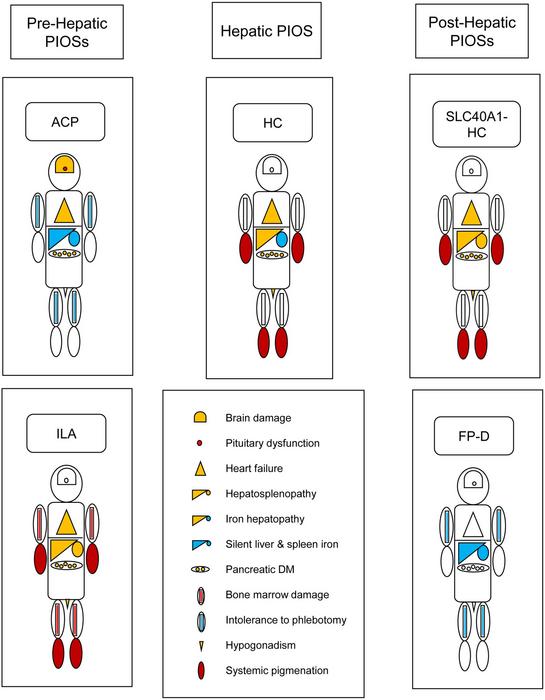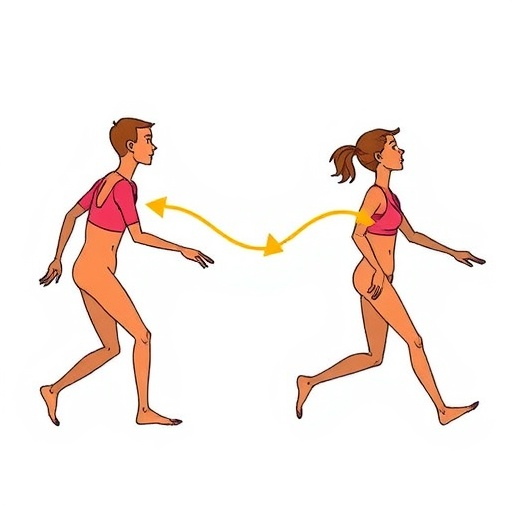The clinical introduction of hepcidin25 (Hep25) has led to a more detailed understanding of its relationship with ferroportin (FP) and divalent metal transporter1 in primary iron overload syndromes (PIOSs). In 2012, we proposed a classification of PIOSs based on the Hep25/FP system, which consists of prehepatic aceruloplasminemia, hepatic hemochromatosis (HC), and posthepatic FP disease (FP-D). However, in consideration of accumulated evidence on PIOSs, we aimed to renew the classification.

Credit: Hisao Hayashi
Background and Aims
The clinical introduction of hepcidin25 (Hep25) has led to a more detailed understanding of its relationship with ferroportin (FP) and divalent metal transporter1 in primary iron overload syndromes (PIOSs). In 2012, we proposed a classification of PIOSs based on the Hep25/FP system, which consists of prehepatic aceruloplasminemia, hepatic hemochromatosis (HC), and posthepatic FP disease (FP-D). However, in consideration of accumulated evidence on PIOSs, we aimed to renew the classification.
Methods
We reviewed the 2012 classification and retrospectively renewed it according to new information on PIOSs.
Results
Iron-loading anemia was included in PIOSs as a prehepatic form because of the newly discovered erythroferrone-induced suppression of Hep25, and the state of traditional FP-D was remodeled as the BIOIRON proposal. The key molecules responsible for prehepatic PIOSs are low transferrin saturation in aceruloplasminemia and increased erythroferrone production by erythroblasts in iron-loading anemia. Hepatic PIOSs comprise four genotypes of HC, in each of which the synthesis of Hep25 is inappropriately reduced in the liver. Hepatic Hep25 synthesis is adequate in posthepatic PIOSs; however, two mutant FP molecules may resist Hep25 differently, resulting in SLC40A1-HC and FP-D, respectively. PIOS phenotypes are diagnosed using laboratory tests, including circulating Hep25, followed by suitable treatments. Direct sequencing of the candidate genes may be outsourced to gene centers when needed. Laboratory kits for the prevalent mutations, such as C282Y, may be the first choice for a genetic analysis of HC in Caucasians.
Conclusions
The genetic background of PIOS differs in Caucasians and non-Caucasians.2 Therefore, physicians have to overcome differences in the global prevalence of PIOS in clinical practice. The Hep25/FP system classifies PIOSs as prehepatic ACP and ILA, hepatic HC, and posthepatic SLC40A1-HC and FP-D. The revised classification for PIOSs may be useful worldwide.
Full text
https://www.xiahepublishing.com/2310-8819/JCTH-2023-00290
The study was recently published in the Journal of Clinical and Translational Hepatology.
The Journal of Clinical and Translational Hepatology (JCTH) is owned by the Second Affiliated Hospital of Chongqing Medical University and published by XIA & HE Publishing Inc. JCTH publishes high quality, peer reviewed studies in the translational and clinical human health sciences of liver diseases. JCTH has established high standards for publication of original research, which are characterized by a study’s novelty, quality, and ethical conduct in the scientific process as well as in the communication of the research findings. Each issue includes articles by leading authorities on topics in hepatology that are germane to the most current challenges in the field. Special features include reports on the latest advances in drug development and technology that are relevant to liver diseases. Regular features of JCTH also include editorials, correspondences and invited commentaries on rapidly progressing areas in hepatology. All articles published by JCTH, both solicited and unsolicited, must pass our rigorous peer review process.
Follow us on X: https://twitter.com/xiahepublishing
Follow us on LinkedIn: https://www.linkedin.com/company/xia&he-publishing-inc/
Journal
Journal of Clinical and Translational Hepatology
DOI
10.14218/JCTH.2023.00290
Article Title
A Revised Classification of Primary Iron Overload Syndromes
Article Publication Date
19-Mar-2024




